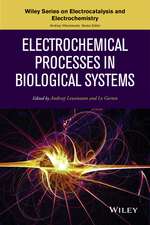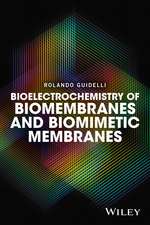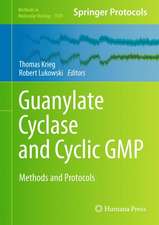Nuclear Reprogramming: Methods and Protocols: Methods in Molecular Biology, cartea 325
Editat de Steve Pellsen Limba Engleză Hardback – 5 dec 2005
| Toate formatele și edițiile | Preț | Express |
|---|---|---|
| Paperback (1) | 563.96 lei 38-44 zile | |
| Humana Press Inc. – 20 dec 2010 | 563.96 lei 38-44 zile | |
| Hardback (1) | 649.87 lei 6-8 săpt. | |
| Humana Press Inc. – 5 dec 2005 | 649.87 lei 6-8 săpt. |
Din seria Methods in Molecular Biology
- 9%
 Preț: 791.59 lei
Preț: 791.59 lei - 23%
 Preț: 598.56 lei
Preț: 598.56 lei - 20%
 Preț: 882.95 lei
Preț: 882.95 lei -
 Preț: 252.04 lei
Preț: 252.04 lei - 5%
 Preț: 802.69 lei
Preț: 802.69 lei - 5%
 Preț: 729.61 lei
Preț: 729.61 lei - 5%
 Preț: 731.43 lei
Preț: 731.43 lei - 5%
 Preț: 741.30 lei
Preț: 741.30 lei - 5%
 Preț: 747.16 lei
Preț: 747.16 lei - 15%
 Preț: 663.45 lei
Preț: 663.45 lei - 18%
 Preț: 1025.34 lei
Preț: 1025.34 lei - 5%
 Preț: 734.57 lei
Preț: 734.57 lei - 18%
 Preț: 914.20 lei
Preț: 914.20 lei - 15%
 Preț: 664.61 lei
Preț: 664.61 lei - 15%
 Preț: 654.12 lei
Preț: 654.12 lei - 18%
 Preț: 1414.74 lei
Preț: 1414.74 lei - 5%
 Preț: 742.60 lei
Preț: 742.60 lei - 20%
 Preț: 821.63 lei
Preț: 821.63 lei - 18%
 Preț: 972.30 lei
Preț: 972.30 lei - 15%
 Preț: 660.49 lei
Preț: 660.49 lei - 5%
 Preț: 738.41 lei
Preț: 738.41 lei - 18%
 Preț: 984.92 lei
Preț: 984.92 lei - 5%
 Preț: 733.29 lei
Preț: 733.29 lei -
 Preț: 392.58 lei
Preț: 392.58 lei - 5%
 Preț: 746.26 lei
Preț: 746.26 lei - 18%
 Preț: 962.66 lei
Preț: 962.66 lei - 23%
 Preț: 860.21 lei
Preț: 860.21 lei - 15%
 Preț: 652.64 lei
Preț: 652.64 lei - 5%
 Preț: 1055.50 lei
Preț: 1055.50 lei - 23%
 Preț: 883.85 lei
Preț: 883.85 lei - 19%
 Preț: 491.88 lei
Preț: 491.88 lei - 5%
 Preț: 1038.84 lei
Preț: 1038.84 lei - 5%
 Preț: 524.15 lei
Preț: 524.15 lei - 18%
 Preț: 2122.34 lei
Preț: 2122.34 lei - 5%
 Preț: 1299.23 lei
Preț: 1299.23 lei - 5%
 Preț: 1339.10 lei
Preț: 1339.10 lei - 18%
 Preț: 1390.26 lei
Preț: 1390.26 lei - 18%
 Preț: 1395.63 lei
Preț: 1395.63 lei - 18%
 Preț: 1129.65 lei
Preț: 1129.65 lei - 18%
 Preț: 1408.26 lei
Preț: 1408.26 lei - 18%
 Preț: 1124.92 lei
Preț: 1124.92 lei - 18%
 Preț: 966.27 lei
Preț: 966.27 lei - 5%
 Preț: 1299.99 lei
Preț: 1299.99 lei - 5%
 Preț: 1108.51 lei
Preț: 1108.51 lei - 5%
 Preț: 983.72 lei
Preț: 983.72 lei - 5%
 Preț: 728.16 lei
Preț: 728.16 lei - 18%
 Preț: 1118.62 lei
Preț: 1118.62 lei - 18%
 Preț: 955.25 lei
Preț: 955.25 lei - 5%
 Preț: 1035.60 lei
Preț: 1035.60 lei - 18%
 Preț: 1400.35 lei
Preț: 1400.35 lei
Preț: 649.87 lei
Preț vechi: 764.55 lei
-15% Nou
Puncte Express: 975
Preț estimativ în valută:
124.37€ • 128.48$ • 103.51£
124.37€ • 128.48$ • 103.51£
Carte tipărită la comandă
Livrare economică 26 martie-09 aprilie
Preluare comenzi: 021 569.72.76
Specificații
ISBN-13: 9781588293794
ISBN-10: 1588293793
Pagini: 348
Ilustrații: XIV, 334 p.
Dimensiuni: 155 x 235 x 27 mm
Greutate: 0.68 kg
Ediția:2006
Editura: Humana Press Inc.
Colecția Humana
Seria Methods in Molecular Biology
Locul publicării:Totowa, NJ, United States
ISBN-10: 1588293793
Pagini: 348
Ilustrații: XIV, 334 p.
Dimensiuni: 155 x 235 x 27 mm
Greutate: 0.68 kg
Ediția:2006
Editura: Humana Press Inc.
Colecția Humana
Seria Methods in Molecular Biology
Locul publicării:Totowa, NJ, United States
Public țintă
ResearchCuprins
Nuclear Transplantation in Xenopus.- Nuclear Transfer in Sheep.- Protocols for Nuclear Transfer in Mice.- Isolation of Stromal Stem Cells From Human Adipose Tissue.- Nuclear Reprogramming by Cell Fusion.- Polyethylene Glycol-Mediated Cell Fusion.- Epigenetic Reprogramming of Somatic Genomes by Electrofusion With Embryonic Stem Cells.- Quantification of Cell Fusion by Flow Cytometry.- Modulation of Cell Fate Using Nuclear and Cytoplasmic Extracts.- Transgenic Systems in Nuclear Reprogramming.- Using Immunofluorescence to Observe Methylation Changes in Mammalian Preimplantation Embryos.- Observing S-Phase Dynamics of Histone Modifications With Fluorescently Labeled Antibodies.- Quantitative Analysis of Telomerase Activity and Telomere Length in Domestic Animal Clones.- Pluripotency: Capacity for In Vitro Differentiation of Undifferentiated Embryonic Stem Cells.- Staining Embryonic Stem Cells Using Monoclonal Antibodies to Stage-Specific Embryonic Antigens.- Analysis of the Nucleolar Compartment of the Nucleus as an Indicator of Nuclear Reprogramming After Nuclear Transfer.- Methylation-Sensitive Polymerase Chain Reaction.- Analysis of DNA Methylation Profiles in Preimplantation Embryos Using Bisulfite Mutagenesis.- Chromatin Immunoprecipitation Assay for Mammalian Tissues.- Histone Modifications and Transcription Factor Binding on Chromatin: ChIP–PCR Assays.- In Vivo Genomic Footprinting Using LM–PCR Methods.- Analyzing Histone Modification Using Crosslinked Chromatin Treated With Micrococcal Nuclease.
Textul de pe ultima copertă
Although nuclear reprogramming-the cellular process underlying cloning and the artificial generation of stem cells from somatic cells-may be considered a "black box" whose interior events are either completely unknown or at least imperfectly characterized, tantalizing clues about its operation are beginning to emerge. In Nuclear Reprogramming: Methods and Protocols, hands-on laboratory scientists describe readily reproducible methods for actually performing nuclear reprogramming by nuclear transfer in several different species, by fusion induced both chemically and electrically, and by the in vivo treatment of cells with cell extracts. Isolation of an adult stem cell type is also described. In addition, several methods of monitoring nuclear reprogramming are presented, including the use of transgenic markers, activation of telomerase as an ES-specific marker, light and electron microscopic observation of structural changes in the nucleus, and the verification of surface marker expression and differentiation potential of stem cells. Biochemical methods are provided for the examination of chromatin protein modifications, nucleosomal footprinting, transcription factor binding, and the study of DNA methylation changes both at the specific locus level and at the level of the whole nucleus. The protocols follow the successful Methods in Molecular Biology™ series format, each offering step-by-step laboratory instructions, an introduction outlining the principles behind the technique, lists of the necessary equipment and reagents, and tips on troubleshooting and avoiding known pitfalls.
Wide-ranging and highly practical, Nuclear Reprogramming: Methods and Protocols significantly expands the repertoire of methods available to perform, study, and understand nuclear programming, not only for cloning, but also for reprogramming somatic cells to stem cells.
Wide-ranging and highly practical, Nuclear Reprogramming: Methods and Protocols significantly expands the repertoire of methods available to perform, study, and understand nuclear programming, not only for cloning, but also for reprogramming somatic cells to stem cells.
Caracteristici
Includes supplementary material: sn.pub/extras















